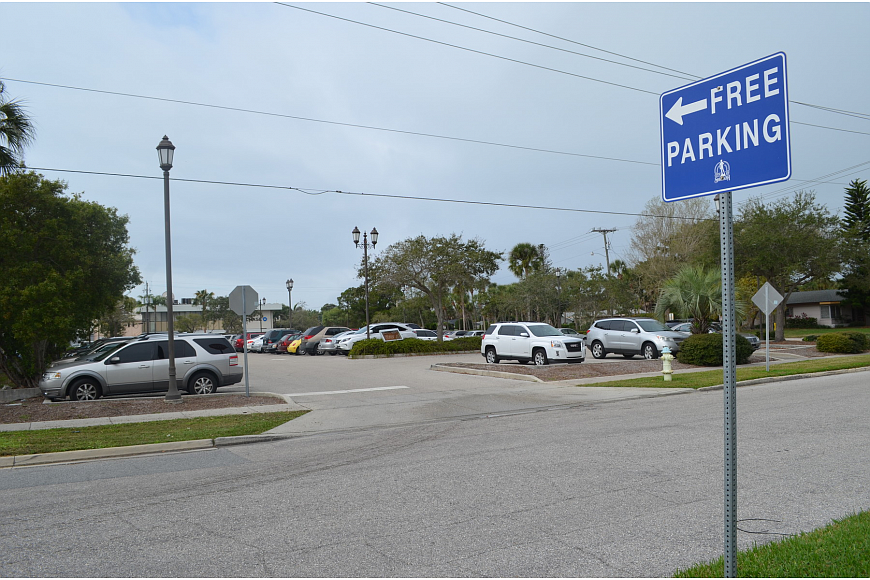- May 2, 2025
-
-
Loading

Loading

To fund a $14.9 million parking garage project on St. Armands Circle, city staff is proposing a tiered paid parking system for the commercial district.
On Monday, city staff will present a detailed update on the proposed garage to the City Commission. In addition to paid parking, staff also recommends creating a special taxing district for properties in the area.
Both new revenue sources would be used to pay down a 20-year bond to fund garage construction. A preliminary timeline suggests the project could be complete by December 2018.
The latest push for a garage dates back to at least 2011, although stakeholders in the area say the demand has existed for more than 20 years. A 2013 study indicated the Circle is facing a 320-space parking deficit. The new garage, which would be located on a municipal lot on North Adams Drive, would include 521 parking spaces.
The demand for a garage may be longstanding, but the possible acceptance of paid parking is a newer development. As the city implemented paid parking downtown — an effort it eventually abandoned in 2012 — officials discussed placing meters on the Circle, as well. At the time, St. Armands stakeholders stood in firm opposition to the idea.
“Every Circle merchant and every Circle landowner would be opposed to it,” said Marty Rappaport, co-chairman of the St. Armands Business Improvement District, in a 2011 interview with the Longboat Observer.
Today, Rappaport has changed his position on paid parking — a sign of his determination to secure a garage for St. Armands. He says he’s not alone: At a recent meeting of Circle property owners, Rappaport said the group expressed willingness to accept the necessary expenses to make a garage a reality.
“There were none opposed, none abstaining,” Rappaport said. “We do have support for the garage.”
At this point, some key details of a paid parking system still aren’t finalized. A report from Walker Parking Consultants proposes a system in which the “core” on-street spaces cost $1 per hour, while perimeter on-street parking costs 75 cents per hour, and surface lot parking is 50 cents per hour.
Staff is looking for direction from the commission on the ultimate cost and hours of operation for paid parking, although City Parking Manager Mark Lyons said that likely won’t be the focus of Monday’s meeting. Instead, staff will look to provide information about the potential profitability of paid parking models as the commission considers investing in the project.
“There were none opposed, none abstaining. We do have support for the garage.” — Marty Rappaport
City officials have attributed the failure of the previous paid parking system in part to the meters themselves, which were criticized as difficult to use. Before any meter vendor is selected, Walker recommends a pilot program in which multiple vendors can compete, allowing the public to decide on its preferred meters.
“I think we have an open mind about making sure we have something that’s easy to use, easy to understand, works quickly, but also provides the benefits people expect,” Lyons said.
If it’s ultimately approved, paid parking would not begin on St. Armands Circle until the garage is constructed, Lyons said.
On Monday, City Finance Director John Lege will also discuss details of the bonding process. The city has already taken steps to establish a special assessment for properties in the commercial tourist district, expected to generate $260,000 per year over the life of the bond. In total, a $15 million bond is projected to require $26.2 million in debt service payments from the city.
Although more refined cost estimates and design details on a garage are still to come, landowners, merchants and residents on St. Armands Circle have already endorsed the project.
“We’ve received complete support from the community in terms of moving forward to get that accomplished,” Lyons said.
May 2016: Adopt assessment, parking fee and bond resolutions
June 2016: Prepare request for proposals from contractors
November 2016: Award construction contract
July-October 2017: Secure bond
October 2017: Set maximum price with contractor
January 2018: Begin construction
December 2018: End construction
October 2019: First principal bond payment
October 2038: Final bond payment